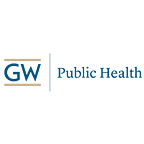America Must Patch Holes in the Safety Net
By Jeff Hild
Despite a massive outlay of federal resources — nearly $3 trillion so far — to respond to the COVID-19 pandemic and economic downturn, why has it been so difficult to support the most vulnerable families and communities? How can additional federal policy responses and implementation of existing resources use a public health lens to build resilience in communities and families so that they can not only bounce back, but bounce forward to an equitable future? Policy makers must respond to the immediate needs of families with an eye toward fixing a health and social safety net that is inflexible and inadequate.
The Census Bureau’s Household Pulse Survey provides evidence of the devastating toll the pandemic and attendant economic downturn is taking on families’ economic security and health. Over half of households with children report losing at least one income. Ten percent of households report not having enough food to eat — a number that increases for households with children — and 32 percent say they are not able to purchase the foods they need. Over 20 percent have no or only slight confidence they can make their rent or mortgage payment next month. This economic disaster is also accompanied by a mental health crisis, with one-third of all Americans reporting signs of anxiety or depression.
As more families need support to survive during these unprecedented times, decades of public policy choices have created race and class divisions that make it difficult for some to access resources. Racist and exclusionary policies have shaped the social safety net, designing aid delivery systems to make the process of getting aid difficult and dehumanizing.
Consider the unemployment insurance system (UI), which exists as a patchwork across states and was designed to exclude most unemployed workers from benefits. Through strict eligibility criteria originally intended to prevent Black Americans from receiving benefits and meager wage replacement rates, far fewer than half of unemployed workers received benefits prior to the pandemic. It is no surprise that when Congress acted to significantly expand eligibility and benefit amounts, including for part-time or gig workers, states have been unable to actually get benefits out to a record number of applicants.
Unlike nearly every other wealthy democracy, the United States also lacks a universal cash benefit, such as a child benefit, that provides some type of support to all families. Lacking a mechanism to quickly get assistance directly to families, Congress had to create multiple bureaucratically cumbersome programs on the fly.
One such example is the Paycheck Protection Program (PPP). Instead of providing funds directly to workers, the PPP requires that businesses apply for funds through private banks, and then promise the government that they will continue to pay their workers. Not surprisingly, well-connected businesses are obtaining this capital. For many industries, such as restaurants, the PPP is not helpful because they either already laid-off employees or they can’t commit to maintaining payroll when they have no idea if and when demand will return to pre-COVID levels.
Resolving these issues will be essential to supporting community resilience that will lessen the public health impacts of future pandemics. However, absent a fully functioning safety net, Congress, state and local governments should pursue short-term options to promote resilience and address equity.
First, Congress can shore up what safety net we do have by increasing the share of federal funding that supports Medicaid and child welfare systems, enhancing both the minimum and maximum SNAP benefits and easing eligibility requirements, and extending enhanced UI provisions well into 2021 and/or tying them to the unemployment rate. Congress can also target support to the most vulnerable. This means addressing the current and looming mental health crisis, further supporting child care providers to ensure families have access to high-quality early childhood education when economies reopen, and targeting direct assistance to essential workers through hazard pay, and families through direct rental and cash support) Finally, Congress must support state and local budgets through the crisis and immediate aftermath. Particularly helpful will be flexible funding streams that can be directed by communities to meet specific needs, such as the Social Services Block Grant, the Community Services Block Grant, and the Community Development Block Grant.
There are also several actions that states and local governments can take in utilizing federal funds and the flexibilities already provided by the federal government. First, states and local education agencies can use education stabilization funds to address inequities, especially access to technology for distance learning and closing the digital divide and focusing on social-emotional and mental health supports, especially trauma-informed supports for students who have been disconnected from school-based supports. Distance learning or part-time learning may persist well into the school year and beyond and students without supports will be left behind with long-term consequences. State and local governments can also center community voice and advance equity by creating or utilizing existing community advisory bodies to help direct federal funds to the most vulnerable community members and relying on entities such as Children’s Cabinets to drive resources to support children and families.
We know that the effects of this pandemic will be felt for years. The central questions policy makers must address is how to provide urgent support for the most vulnerable groups during this phase of the pandemic while making structural changes that will assure resilience in the future.
Jeff Hild, JD, is the Policy Director at the Sumner M. Redstone Global Center for Prevention and Wellness at the George Washington University Milken Institute School of Public Health.
